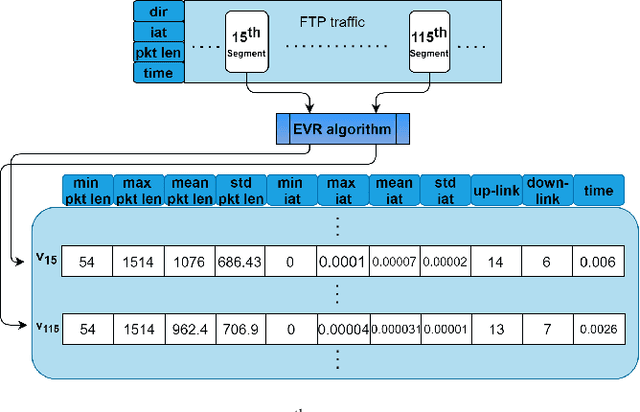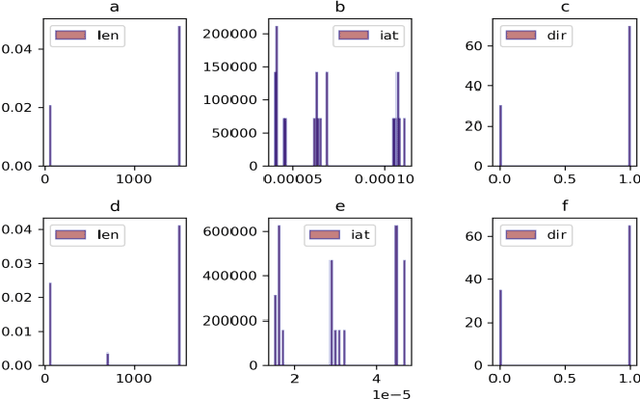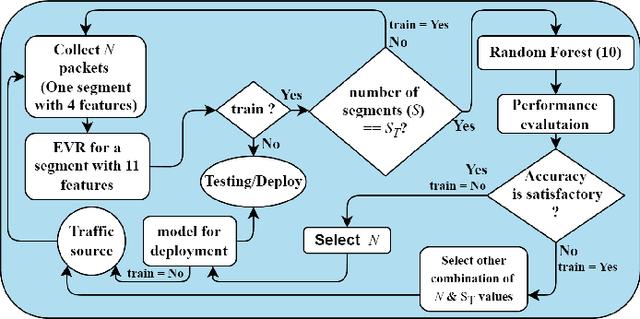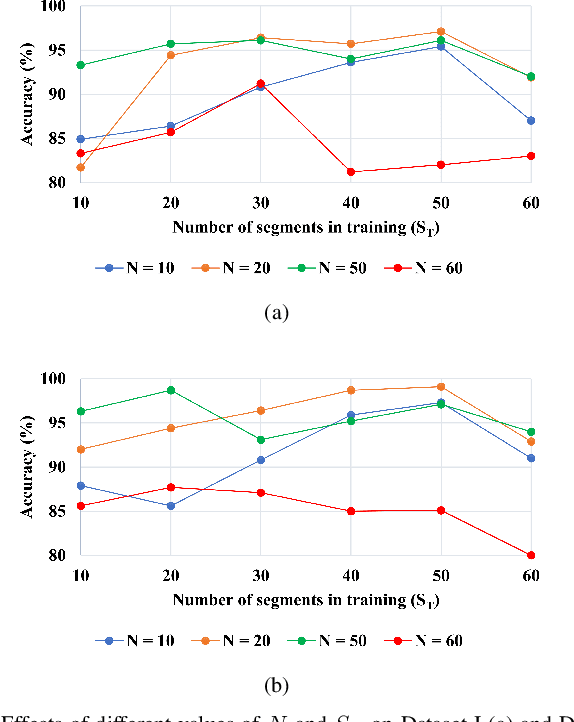Segmented Learning for Class-of-Service Network Traffic Classification
Paper and Code
Aug 03, 2022



Class-of-service (CoS) network traffic classification (NTC) classifies a group of similar traffic applications. The CoS classification is advantageous in resource scheduling for Internet service providers and avoids the necessity of remodelling. Our goal is to find a robust, lightweight, and fast-converging CoS classifier that uses fewer data in modelling and does not require specialized tools in feature extraction. The commonality of statistical features among the network flow segments motivates us to propose novel segmented learning that includes essential vector representation and a simple-segment method of classification. We represent the segmented traffic in the vector form using the EVR. Then, the segmented traffic is modelled for classification using random forest. Our solution's success relies on finding the optimal segment size and a minimum number of segments required in modelling. The solution is validated on multiple datasets for various CoS services, including virtual reality (VR). Significant findings of the research work are i) Synchronous services that require acknowledgment and request to continue communication are classified with 99% accuracy, ii) Initial 1,000 packets in any session are good enough to model a CoS traffic for promising results, and we therefore can quickly deploy a CoS classifier, and iii) Test results remain consistent even when trained on one dataset and tested on a different dataset. In summary, our solution is the first to propose segmentation learning NTC that uses fewer features to classify most CoS traffic with an accuracy of 99%. The implementation of our solution is available on GitHub.
 Add to Chrome
Add to Chrome Add to Firefox
Add to Firefox Add to Edge
Add to Edge